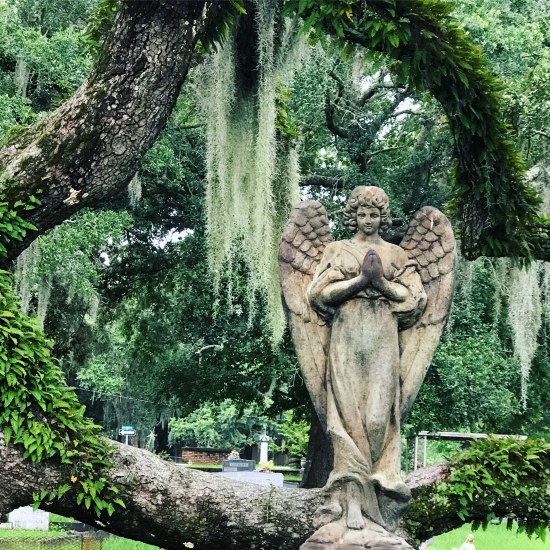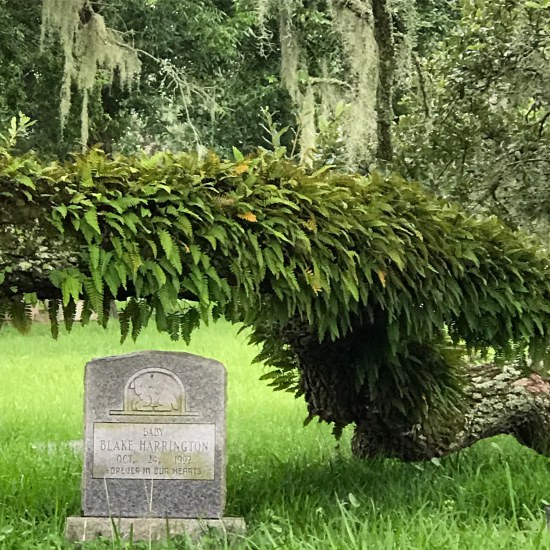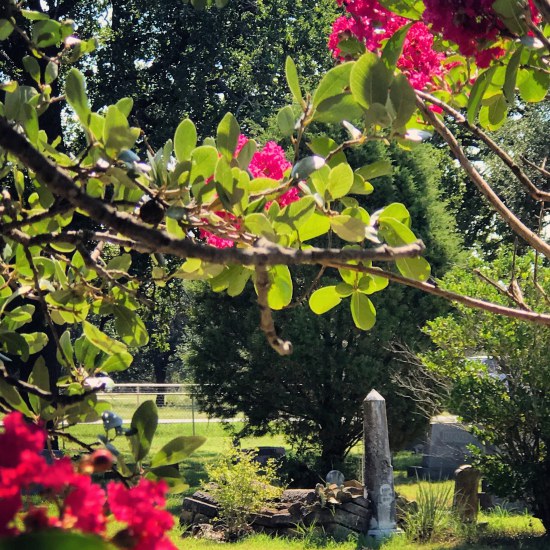Understanding Cemetery Symbols by Tui Snider
[The following is an adapted excerpt from my book, Understanding Cemetery Symbols. I hope you enjoy it! Also, full disclosure: that’s an Amazon affiliate link. If you buy my book after clicking it, I make a few pennies at no additional cost to you.]

Bodies spilling into the streets -yikes!
From the time of the Pilgrims through the 1700’s, American city dwellers were buried in churchyards. Unfortunately, as our cities grew in population, these urban burial grounds became overcrowded. This was especially troublesome during epidemics, when city graveyards were hastily filled with new bodies.
From time to time, a churchyard wall would weaken from flood or other deterioration. When these walls broke, rotting corpses tumbled onto the streets. Not only was this a horrifying sight, but it smelled terrible and spread disease. Can you imagine?
Meanwhile, European city dwellers faced a similar dilemma. To remedy the situation, Parisians created a lush, well-landscaped burial ground beyond the city limits in 1804. Called Pere La Chaise, this became the world’s first garden cemetery, and it remains a popular tourist destination to this day. (Have you ever been there?)

Garden cemeteries were America’s first public parks
Inspired by the success of the French, the city of Boston hired a team of architects and designers to create something similar. In 1831, Mount Auburn Cemetery in Cambridge, Massachusetts opened its gates to the public as the first garden cemetery in America. It was such a hit that other cities around the nation soon followed suit.
While the original goal for garden cemeteries was to rid the city of its dead, they became highly popular with the living, as well. These days, a cemetery rarely tops our list for weekend destinations, but during the Victorian Era, a day spent at a garden cemetery was far from morbid. City dwellers packed picnics so they could spend a relaxing day in nature. Hunters shot game while artists set up easels and painted landscapes. Some garden cemeteries even hosted public festivals and carriage races!
In fact, it was the success of these garden cemeteries that inspired America’s first public parks.

Parks and cemeteries became separated over time
As infant mortality rates dropped and life spans have increased, American’s relationship with death changed. People rarely die at home now, for instance, or have wakes or funerals in their parlors as they once did. As the 20th century progressed, people began using public parks specifically created for recreation and visiting cemeteries only for mourning and funerals.
Modern Americans tend to avoid cemeteries unless they are attending a funeral. Even after our loved ones are buried, many of us rarely return to visit them. Death has become something most of us can ignore until the moment it strikes.
That said, in recent years there has been another shift in how we view cemeteries. Americans are beginning to understand that burial grounds exist to nurture the living as well as shelter the dead. Many of America’s original garden cemeteries, including Mt. Auburn, have been placed on the historical register.

Garden cemetery renaissance
In addition, historic cemeteries across the country now offer historic tours, annual festivals and events which run the gamut from jazz picnics, costumed reenactments, performances of Shakespeare, and more.
Others offer birding tours, and since the shrubs and flowers planted during the Victorian Era are now a source for heritage bulbs and plantings, some have applied for arboretum status. In this way, America’s garden cemeteries have become living libraries.
In the 1960’s, Harvard professor turned hippie, Timothy Leary, famously urged people to “tune in, turn on, and drop out.” These days, with our fancy phones and other smart devices, we spend most of our time tuned in and turned on. Perhaps a better cry for our time might be to “unplug, unwind, and take a quiet stroll through a historic graveyard.”
Want to learn more about cemetery symbols?
BLOG POSTS: Click here to read a whole bunch more blog posts about historic graveyards and cemetery symbols. I’m constantly adding new content here!
READ MY BOOK: Check out my book, Understanding Cemetery Symbols. It’s available on Amazon in paperback and ebook form.

I had no idea that cemeteries were America’s first public parks. That makes so much sense, though. Our here in the wild west of Arizona, I have strolled through Boothill Graveyard in Tombstone. I can’t remember any of the funny/odd/vengeful epitaphs because that was years ago. I should plan another visit.
I was surprised to learn that, too! Oh, I need to revisit Boothill. My folks spend their winters in Mesa, so next time I visit them there, I will drop by again. :)
I visited Pere la Chaise back in 1998. It’s a lovely place! It feels oddly like a small city of sorts.
I presently live near Forest Hills Cemetery which was designed by Henry A. S. Dearborn after he designed Mount Auburn Cemetery (and apparently one he preferred because he’s buried in Forest Hills too). It really is a center of the community – a place where people walk their dogs, where children learn how to ride bikes, and they even have contemporary sculpture on display.
Oh, how wonderful! I’ve only read and seen photos of the three cemeteries you mention. I’m planning a road trip to see Mount Auburn and Forest Hills among many others, however. Really warms my heart to hear that they are still treated like parks! Thanks for dropping by. :)
There are some beautiful cemeteries out there. Still don’t think I could just go walk around one. I’d feel bad about accidentally stepping on a grave.
~Patricia Lynne aka Patricia Josephine~
My A to Z’s of Dining with IC
I hear ya… but there’s really no need to feel bad about stepping on a grave. The reason to avoid doing so is actually quite practical: old pine coffins would occasionally collapse under the weight of a person walking across a grave. I’ve met a couple monument builders who have had this happen to them. Talk about scary!
The other thing to remember is this: cemeteries are for the living. They were America’s first public parks and people are meant to commune with nature there. :)
I LOVE Pere La Chaise!
I do, too, but I’ve only seen photos. I really, really need to visit Pere la Chaise in person! Thanks for dropping by! :)